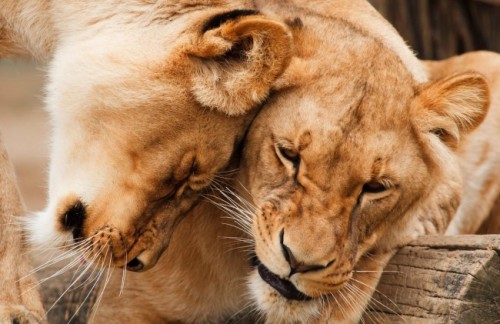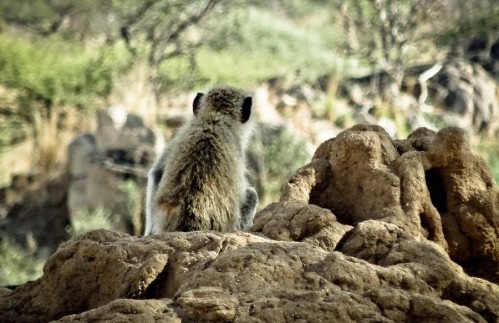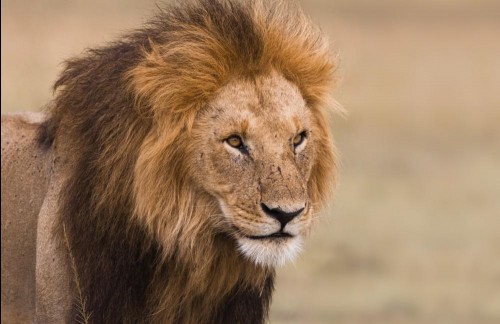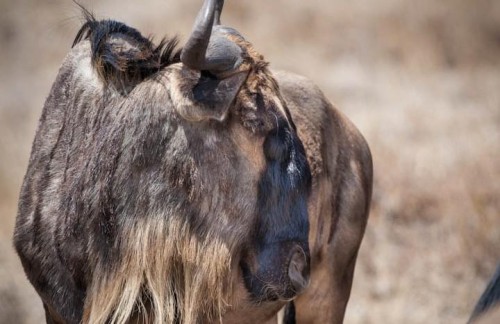Religion in Kenya
Due to the presence and influence of Christian missionaries across the country during the 19th century and in the years since, some 45% of Kenyans identify as Christians today.
The Catholic and Anglican Churches are the most well established in the country, and missionaries from these churches and a number of others maintain a presence in the country to this day offering medical, educational, and religious aid.

As is the case in many countries today, Kenya also has a growing Islamic community. Mombasa on the country's coast has the largest population of Muslims, but the religion has a presence in most regions and cities. Roughly 10% of Kenyans identify as Muslim. The country is also home to a large Indian population, meaning that Hinduism, Buddhism and Sikhism are not uncommon.
Prior to the advent of Christianity in Kenya, the nation's native people practiced a number of traditional tribal beliefs. Each tribe typically practiced monotheism – the belief that there was a single God, known as 'Ngai' or 'Were' among other names.
Each tribe also had its own creation mythology and beliefs that generally tied in closely with the land in which they lived. Today, many tribes have since foregone their original beliefs in favor of Christianity. Of those who still practice their original beliefs, the Maasai, Samburu, and Turkana tribes are the most prominent.
This isn't to say that modern Kenyans do not still believe in some facets of their original religions – with ancestor worship and even witchcraft still believed in by some.

Kenya’s Maasai
The most famous tribal people in East Africa, the Maasai people, have spread out across Kenya and Tanzania and remain largely in touch with their original beliefs and culture.

Where most Kenyan tribes have adopted the modern western lifestyle, the Maasai people lead lives quite similar to those they have lived for thousands of years. Perhaps the most famous practice of the Maasai is their proud warrior tradition, around which much of their social life revolves. When a Maasai boy reaches the appropriate age (generally between the age of 12 and 25) his father may decide that he is ready to become a man. After a painful circumcision ritual, the young warriors spend several months away from home for training and further ceremony, and generally live apart from their tribe until they return as senior warriors.
Senior warriors are important figures within their tribe, charged with defending the village. They are able to take multiple wives provided they have the wealth to support them. In Maasai terms, wealth is measured in the amount of cattle an individual owns; although modern Maasai may hold other jobs that generate income.
Cattle remain a central part of Maasai life to this day, and the animals comprise a large portion of the Maasai diet. They do not only eat the meat and drink the milk of the animals, but also drink the blood. Other animals the Maasai eat include goats and sheep. They believe that God (known to the Maasai as Enkai) gave them goats, sheep, and cattle for eating, and that they do not need the native animals.
Priests of the Maasai religion are known as Laibon, and are believed to be a direct descendant of Enkai – who is both male and female. Laibon are not political leaders, but are believed to have the power to heal or to predict the future. Because of their reliance on herd animals over agriculture, the Maasai typically need a great deal of land to maintain their nomadic lifestyles. Conservancies in Kenya and Tanzania cater to this nomadic lifestyle.
While those villages that allow visitors tend to be somewhat less authentic and very touristy, it is still a fascinating cultural experience and a popular part of any Kenyan safari.
The Embu Tribe of Kenya
Dwelling on the fertile south eastern side of Mount Kenya, the Embu comprise roughly half a million people and are closely tied to the neighboring Mbeere tribe with whom they still trade. The Embu are typically farmers, raising crops both to feed their families and to sell.
The original Embu religion revered a god named Ngai who lived atop Mount Kenya, but modern Embu are predominantly Christian.
The Kalenjin Tribe of Kenya
Made up of between 3 and 4 million Kenyans, the concept of 'Kalenjin' is a relatively new one, having been pioneered by as many as ten Nandi-speaking tribes in the 1950s as a way to gain greater political power. Because of this amalgamation of multiple tribes, the history of the Kalenjin people is a difficult one to pin down. There is no one unified history for these people, but they do share similar cultural traits including a strict age group social structure, circumcision, polygamy, and a strong oral storytelling tradition.
 Image courtesy of Xiaojun Deng
Image courtesy of Xiaojun DengTraditionally, the Kalenjin religion believed in a god called Asis, who was symbolized by the sun. The spirits of departed ancestors were also revered, and sacrifices were made in their honor. These days, like many tribes in Kenya, the Kalenjin practice Christianity mixed with some of their traditional beliefs. The Kalenjin are most famous around the world as a tribe with accomplished runners.
The Kamba Tribe of Kenya
A tribe of agriculturalists and traders, the Kamba (sometimes known as the Akamba) call the central and eastern parts of Kenya home. The Kamba are also known as accomplished artists, and Kamba pottery and wood carving are popular souvenirs for visitors to Kenya.
Originally from the west of Tanzania, the Kamba migrated sometime in the 18th century and have since settled in eastern Kenya. Large populations of Kamba people can be found to this day in modern coastal cities.
Like many Kenyan tribes, the Kamba practice male circumcision and are a patriarchal society in which the male is the head of the household. Both cattle and goats are important forms of currency, and a bride-to-be's family can be paid in one of these before marriage can be arranged.
The Kamba originally believed in a God called Ngai (or sometimes Mulungu) who was a merciful and unapproachable figure. People would make offerings to the spirits of their ancestors to act as go-betweens between themselves and Ngai. Today, the majority of Kamba are Christian.
The Kikuyu Tribe of Kenya
Making up 22% of the Kenyan population, the Kikuyu number about 6 million people and are the largest ethnic group in the country. A tribe who have embraced the modern 'western' way of life, the Kikuyu have enjoyed great economic and political power in Kenya since the nation's founding.

Three of Kenya's presidents have been from the Kikuyu tribe. Originally farmers in the lands surrounding Mount Kenya, the Kikuyu lost much of their traditional lands to the British during the colonial era. This led to great unrest within the country and contributed to the Mau Mau rebellion that was a catalyst for the independence of Kenya.
Although they regained their ancestral lands following the rebellion, the Kikuyu these days live all over Kenya. Prior to converting to Christianity, the Kikuyu believed in a God called Ngai who lived atop Mount Kenya. Similar to the Christian belief in an Adam & Eve, the Kikuyu believed humanity had arisen from a single man (Kikuyu) and woman (Mumbi) who had nine children that would go on to become the Kikuyu. The Kikuyu traditionally practice polygamy, allowing men to take multiple wives.
The Kisii Tribe of Kenya
With lands along the fertile shores of Lake Victoria, the Kisii derive a great deal of economic and financial power from their tea and coffee plantations. A modern and fecund tribe, the Kisii are one of the fastest growing ethnic groups in the world and have spread across all of Kenya. Kisii history is one full of conflict, as the tribe would often feud with the neighboring Maasai, Luo, and Nandi tribes. To this day, the Kisii are seen as a strong people.
While 75% of Kisii people now identify as Christian, many still hold to their original belief in a God named Engoro. The supreme creator and the force behind thunder and lightning, Engoro could only be spoken to through the spirits of ancestors. Medicine men were both healers and protectors against witchcraft, and witchcraft is still feared to this day even by modern, Christian Kisii.
Unlike the majority of Kenyan tribes, Kisii society is not divided up by age sets. Several generations of Kisii will live together and work closely together, rather than only socializing with those in their own age set.
The Luhya Tribe of Kenya
The second largest ethnic group in Kenya, the Luhya comprise roughly 5.3 million people from between 16 and 18 sub groups. Agriculturalists who traditionally dwelt in the lands between Lake Victoria and the border with Uganda, the Luhya are a modern tribe who live in many cities across Kenya.
The Luhya believed in a God called Were and also worshiped the spirits of ancestors, but many have now converted to Christianity. The Luhya are distinct in being a tribe that does not practice female circumcision, although males are circumcised between the ages of 8 and 15, usually at large annual ceremonies. These ceremonies create age sets comprised of individuals who were circumcised in the same ceremony.
Another interesting practice of the Luhya came at times of death and mourning. All mourners would come and stay with the family of the deceased for 40 days to sing songs, tell stories, and celebrate the memory of the departed. Modern Luhya have replaced this 40 day vigil with a shorter one (generally a week), but this mourning period remains an intriguing part of Luhya culture.
The Luo Tribe of Kenya
The third largest tribe in Kenya, the Luo make up approximately 12% of the nation's population. Their traditional territories extend beyond the Kenyan borders to include lands in Tanzania, Uganda, and Sudan. A politically active people, the Luo tend to hold positions in the opposition to the majority Kikuyu party that has produced three of Kenya's presidents.
With lands predominantly in western Kenya, the Luo were not a tribe who had a great deal of involvement in the Mau Mau rebellion. Their interactions with European colonists were limited, although modern Luo have adapted quickly to the western lifestyle and most follow Christianity. Circumcision is not a large part of their society, with marriage and death being the more prominent rites of passage.
The Luo also have a rich musical tradition, with songs and instrumental music being a large part of their lives. Barack Obama's father is Luo, a point of pride with the heavily political people.
The Meru Tribe of Kenya
Not to be confused with the tribe of the same name in Tanzania, the Meru do share one point of commonality with the people who call Mount Meru their ancestral home, with the Kenyan Meru having settled on the slopes of Mount Kenya.
Meru history is one rich with myth and folklore, and their creation mythology bears a striking resemblance to that of Judaism – including a prophet left in a reed basket, a king who ordered the deaths of the first born, and an escape from slavery by a 'Red People'.
The Meru place a great deal of emphasis on male circumcision as a rite of passage, and share the practice of brides being paid for in livestock with other major Kenyan tribes. Marriage typically takes place as soon as circumcision is healed.
Religiously, the Meru traditionally followed a single god known as either Arega Kuthera or Murungu, as well as a complex spirit world that included the kind spirits of departed ancestors and evil spirits who were to be feared.
Interestingly for a people who revere the spirits of the dead, the Meru consider the physical dead to be unclean. Those close to death are encouraged to leave their homes and die elsewhere, as dying in one's own home would require the house to be burned down to cleanse it.
The mugwe were priests and spiritual leaders of the Meru, although this role has fallen into disuse with the advent of Christianity.
The Mijikenda Tribe of Kenya
A conglomeration of nine different tribes (Mijikenda means 'nine cities'), the Mijikenda dwell on the coast of Kenya and Tanzania. Comprised of the Kauma, Chonyi, Jibana, Giriama, Kamabe, Ribe, Rabai, Duruma, and Digo people, the Mijikenda share a common language with nine dialects. The tribe has traditionally strong ties with the neighboring Swahili.
Sometimes known as nyika (an impolite term meaning “bush people”), the Mijikenda consider parts of the nearby forests to be sacred. These 'kaya forests' are not cleared for agriculture, although in recent years the necessity for greater land for tourism or residential areas has meant the sacred areas have been cleared against the wishes of the Mijikenda.
Each village is led by the eldest generation, who are responsible for such varied tasks as solving disputes, providing rain, and managing the kaya forests. If elders were not able to produce rain (as is often the case during droughts), they were removed from power. Like many Kenyan tribes, circumcision is an important rite of passage and means of creating age sets. Farmers by trade, the Mijikenda especially prize the coconut palm. Traditionally, the Majikenda practiced 'pawning', the act of owning and selling other people; this is no longer practiced.
The Rendille Tribe of Kenya
A semi-nomadic people traditionally from the arid Kaisut Desert, the Rendille have been forced to adopt a more settled existence due to years of drought.
The Rendille rely on camels to provide them with both milk and meat due to the arid lands that they call home. A semi-nomadic people, the Rendille follow a strict land management model that sees them relocate only two or three times a year.
Like other major Kenyan tribes, practices such as circumcision, arranged marriage, and a warrior subculture are still prevalent. Unlike other Kenyan tribes, however, the Redille still hold on to their original religious beliefs; revering a god known as Wakh or Ngai.
The Samburu Tribe of Kenya
A small tribe made up of only around 150,00 individuals, the Samburu call the lands of the Rift Valley in northern Kenya their home. Like the Maasai whom they bear a great resemblance to, Samburu society revolves heavily around the herds of cattle and goats that they keep. Wealth is measured by the size of an individual's herd.
The Samburu practice circumcision as a rite of passage and have a warrior class within their tribes. Polygamy is practiced and men are able to have as many wives as their wealth allows them to afford.
Religiously, the Samburu believe in a god known as Ngai or Nkai, who lives in the mountain peaks surrounding their lands. Rather than relying on ancestor spirits to speak to their god for them, the Samburu pray directly to their god.
The Somali Tribe of Kenya
While the majority of the Somali tribe dwells within neighboring Somalia, roughly half a million people who identify as Somali live in eastern Kenya.
The tribe pre-dates the existence of the nation of Somalia, with its people having lived in modern day Kenya, Somalia, and Djibouti before the colonial era. Due to their extensive contact with Arabic people along the coasts of Somalia, the Somali people have been a predominantly Muslim people for almost a thousand years.
The Swahili Tribe of Kenya
A coastal tribe of traders, the Swahili have enjoyed extensive contact with other tribes and nations over their history. Their language, Swahili, is spoken across a number of East African countries and is one of the two official languages in Kenya.
Their contact with other nations has made it difficult to establish what is traditional in Swahili culture, as they have adopted a great many customs and beliefs from those they have encountered. The strongest influence on the Swahili people is their Muslim religion, which is practiced among Swahili people much as it is elsewhere in the world.
The Taita Tribe of Kenya
A minor tribe of some 250,000 people residing in south-eastern Kenya, the Taita speak a Bantu-family language and have largely abandoned their traditional ways in adopting the modern lifestyle. Traditionally, the Taita were farmers whose success at producing food led to a rapid growth in population. These days, having successfully assimilated into modern life, very little of the Taita traditions remain.
The Turkana Tribe of Kenya
Calling the dry lands around the seasonal Lake Turkana home, the Turkana people still lead rural lives much as they have for centuries. Their isolation has allowed them to maintain their traditional beliefs, and they have so far resisted the spread of Christianity that has converted many other Kenyan people.
 Image courtesy of Jeremy Weate.
Image courtesy of Jeremy Weate.A nomadic people who raise cattle, goats, sheep, and camels, families are generally quite large as sons remain with their father's family even after they have married and had their own children. The Turkana do not practice circumcision, but instead practice a number of less painful initiation rites into adulthood for their men. Girls become women when they are married. The Turkana worship Akuj, a god whom they can pray to directly or implore for help through the spirits of their ancestors.





















































